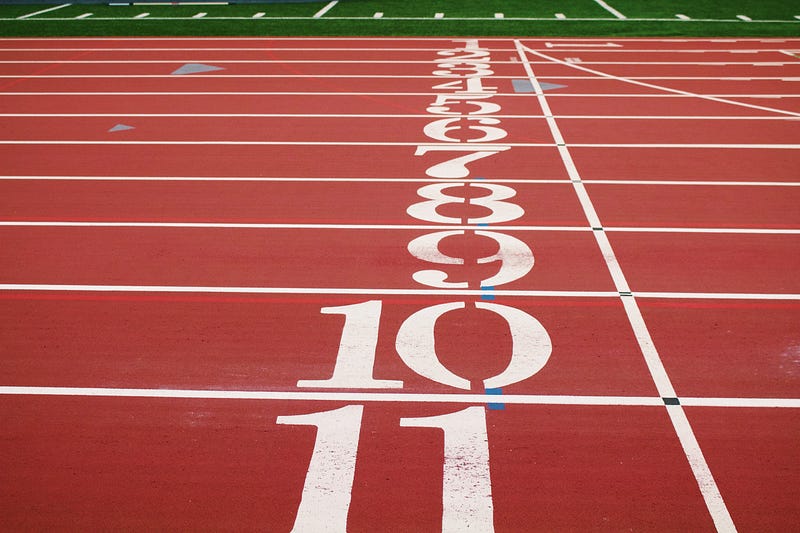The Distinct Mitochondria of Senior Athletes: Insights and Findings
Written on
Chapter 1: Mitochondrial Power in Athletic Performance
Engaging in physical activity is undeniably beneficial for your health. It can rejuvenate your blood, release neuroprotective proteins, strengthen neural connections, and positively influence epigenetic markers related to aging. These are merely a few of the numerous advantages I’ve previously discussed, and the list goes on.
It's important to note that a rigorous exercise routine isn’t a prerequisite; any form of movement is better than being sedentary. But what fuels these movements? Muscle contractions. And at the core of these contractions? Mitochondria.
These tiny organelles are particularly abundant in muscle cells, constituting roughly 3-8% of the total cell volume, with the heart leading the pack—up to 35% of its volume is made up of mitochondria. They serve as the energy sources that enable our physical activities, utilizing nutrients derived from our food and fat reserves. Importantly, while mitochondria aid in our exercise, the act of exercising also benefits these cellular powerhouses.
However, as we grow older, mitochondrial functionality tends to decline. Their capacity to combat damage diminishes, leading to proton leakage.
Yet, there are exceptions to this trend. Master athletes, individuals over 35 who maintain their athletic prowess well into advanced age, exemplify this resilience. Remarkably, some centenarians are still competitively sprinting the 100 meters.
This raises an intriguing question: Do they possess superior mitochondria?
To explore this, researchers examined 15 master athletes aged between 75 and 93 (8 women and 7 men) engaged in sprinting or endurance competitions, including 8 world record holders at the time of the study.
Muscle biopsies were taken from their quadriceps (specifically the vastus lateralis) to analyze muscle fiber composition, mitochondrial DNA, and protein levels. This was supplemented by MRI scans and various tests assessing the athletes' overall health and fitness.
By comparing their findings with age-matched non-athletes, the researchers identified differences in 800 proteins—around half of which were linked to mitochondrial functions, such as enhancing cellular respiration and promoting mitochondrial proliferation. Notably, the athletes had fewer compromised respiratory fibers.
Of course, one might argue that these athletes exhibit superior mitochondrial function due to their lifelong dedication to fitness. While that’s true, the analysis revealed 176 proteins that were expressed differently in master athletes compared to their non-athletic counterparts, even after excluding the proteins that respond to exercise. The researchers noted:
Out of 301 unique MA+ proteins, specific subsets—mitochondrial translation (36 proteins), inner membrane (75 proteins), and matrix proteins (65 proteins)—seem to be independent of physical activity, suggesting a distinct biological signature in our master athlete cohort.
Thus, it's plausible that both rigorous training and favorable genetics contribute to the unique mitochondrial characteristics of these master athletes. However, it’s essential to remember that regardless of genetic predisposition, exercise is a powerful ally for enhancing mitochondrial function and overall health.
The researchers aim to delve deeper into these unique proteins, as understanding them may unveil the biological mechanisms that empower certain individuals to sustain high levels of physical activity later in life. This knowledge could pave the way for innovative therapeutic approaches to combat sarcopenia and the decline in function associated with aging.
Keep those mitochondria energized!
As always, thank you for your attention. If you're interested in exploring broader scientific concepts, consider subscribing to my newsletter, Thinking Ahead. It covers an array of topics in science, philosophy, technology, and psychology, and I assure you it won’t clutter your inbox.
Section 1.1: Understanding Mitochondrial Function

Mitochondria play a crucial role in our body's energy production and overall athletic performance.
Subsection 1.1.1: The Impact of Aging on Mitochondria
As we age, mitochondrial efficiency tends to decrease, affecting our physical capabilities.
Section 1.2: Insights from Master Athletes
Chapter 2: Role of Mitochondria in Sports Performance
Physical activity has profound effects on mitochondrial health.
In the video titled Role of Mitochondria in Sports Performance, experts discuss how these organelles are essential for athletic endurance and recovery.
Chapter 3: Mitochondria and Aging Athletes
Exploring the connection between mitochondrial function and aging in athletes is vital for understanding longevity in sports.
The video Mitochondria + Oxidative Stress + Aging Athletes with Coach Debbie Potts sheds light on how oxidative stress affects athletic performance in older individuals.